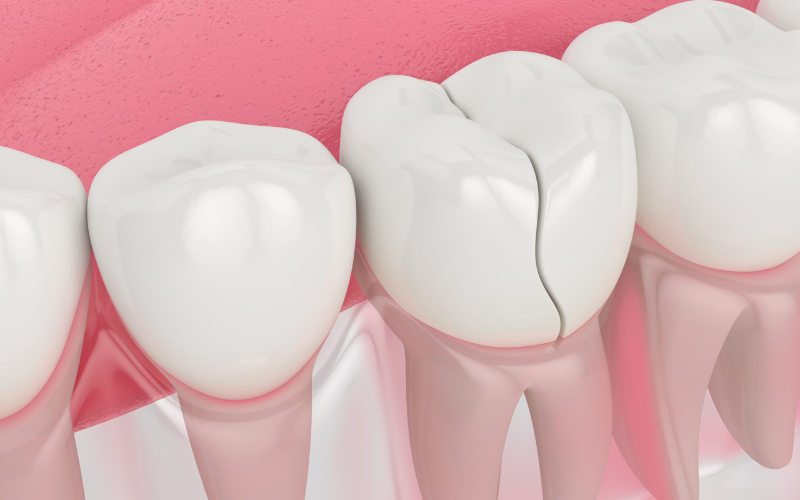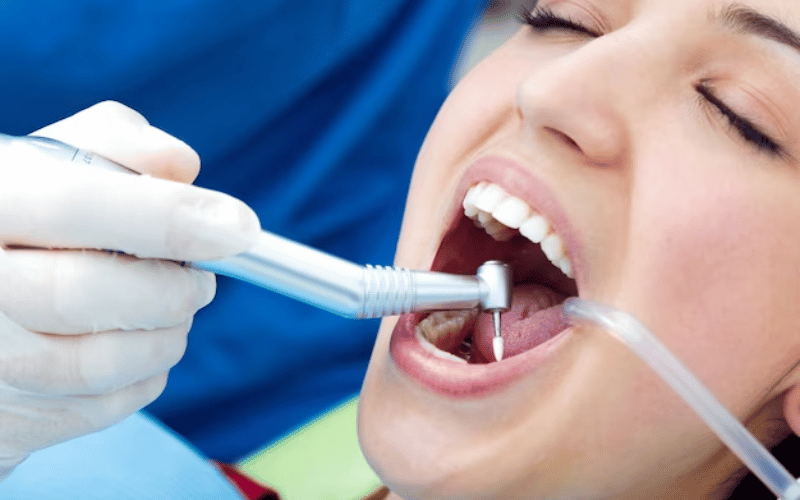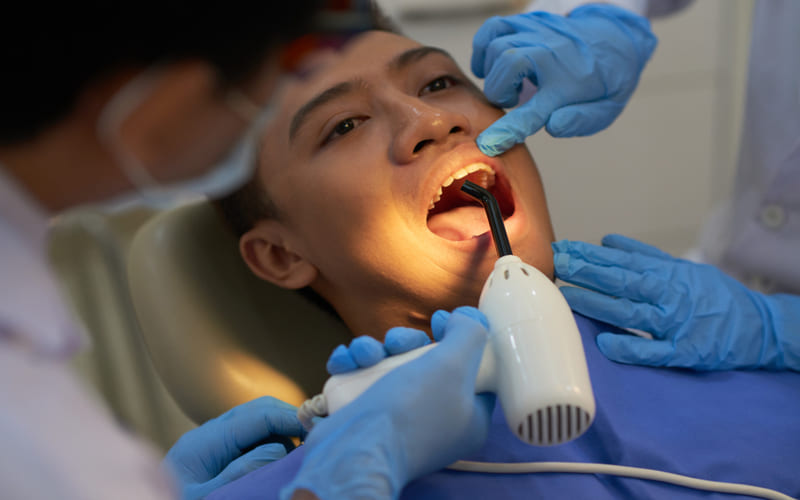1520 Green Oak Place, Suite B Kingwood, Tx 77339
Restorative Dentistry For Cracked Or Broken Teeth: Your Treatment Options

A broken or fractured tooth is more than simply a cosmetic problem. If treatment for it is not received, then it can make your dental health worse, create discomfort, and possibly cause more harm. Restorative dentistry offers some ways to restore your smile regardless of whether your tooth was damaged in an accident, by biting into something hard, or due to some other reasons. Let’s discuss the best ways to repair your damaged teeth, in this blog.
Top Procedures in Restorative Dentistry
1. Dental Bonding: An Easy Way To Repair Small Cracks
Small chips and cracks can be quickly and affordably fixed with dental bonding. The tooth’s appearance and functionality are restored by applying a tooth-colored resin and using a specific light to solidify it.
- Best for: Small chips, minor cracks.
- Pros: Quick, painless, cost-effective.
- Cons: Less durable than other options.
2. Dental Crowns: Durability and Protection
A dental crown serves as a protective cap over the tooth in terms of moderating severe injury and stopping additional fractures. Strength and beauty are restored by crowns.
- Best for: Weak and cracked tooth.
- Pros: Durable, prevents more harm.
- Cons: Needs some teeth contouring.
3. Dental Veneers: Aesthetic Restoration for Front Teeth
Veneers might make all the difference if your damaged tooth is at the front. These thin porcelain shells conceal flaws, bringing a smile free of flaws, enhancing your restorative dentistry results.
- Best for: Chips and visible cracks.
- Pros: Stain-resistant and natural-looking.
- Cons: irreversible process.
4. Root Canal Therapy: Preserving The Internal Tooth
A deep crack that reaches the pulp (inner layer) can cause infection and severe pain. A root canal removes the damaged pulp, cleans the tooth, and seals it to prevent future issues.
- Best for: Deep fractures, tooth pain.
- Pros: Saves the natural tooth, eliminates infection.
- Cons: Requires a crown for protection.
5. Dental Implants – Permanent Solution for Damaged Teeth
If the tooth is beyond repair, extraction followed by a dental implant is the best option. Implants replace the missing tooth with a strong, natural-looking solution that lasts a lifetime.
- Best for: Severely broken or non-restorable teeth.
- Pros: Permanent, prevents bone loss, looks natural.
- Cons: Requires surgery, higher cost.
Over 40% of adults have gone through some form of tooth trauma, including cracks or breaks. Taking action early can prevent further complications and protect your oral health in the long run.
Consider These Factors While Choosing a Treatment
- Severity of damage – Minor chips may only need bonding, while deep cracks require root canals or crowns.
- Tooth location – Veneers work best for front teeth, while crowns or implants are ideal for molars.
- Budget and durability – Some treatments, like bonding, are more affordable but less durable than implants or crowns.
A cracked or broken tooth doesn’t have to mean the end of a healthy smile. With modern restorative dentistry, you have multiple options to repair the damage and regain both function and aesthetics.
Whether you need bonding, crowns, veneers, root canals, or implants, the right treatment will ensure your teeth stay strong, beautiful, and healthy. Consult our dentist today and restore your confident smile.







